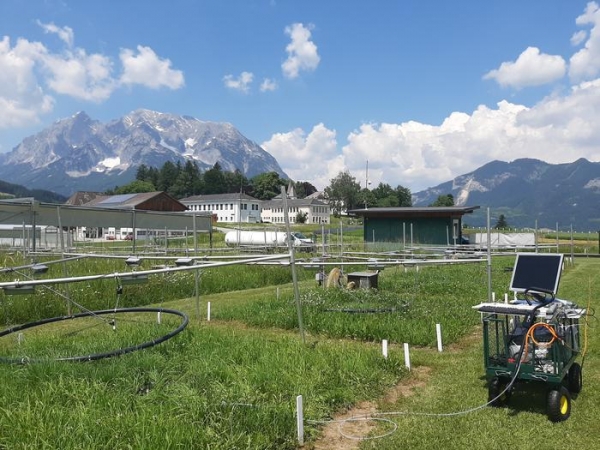New research co-led by the University of Maryland reveals that drought and increased temperatures in a CO2-rich climate can dramatically alter how grasslands use and move water. The study provides the first experimental demonstration of the potential impacts of climate change on water movement through grassland ecosystems, which make up nearly 40% of Earth’s land area and play a critical role in Earth’s water cycle. The study appears in the January 17, 2025, issue of the journal Science.
“If we want to predict the effects of climate change on Earth’s water resources, we need data showing how the hydrologic cycle will respond at a small scale where we can define mechanisms, but that just hasn’t been available,” said Jesse Radolinski corresponding author of the study, a post-doctoral research associate in the UMD Department of Environmental Science & Technology who began the work at the University of Innsbruck. “Our experiments found that under summer drought conditions, and higher air temperatures that are expected under a future with elevated CO2, two things change fundamentally: One, the structural properties of the soil in the root zone change so that water flows differently than we expected, and two, these altered climate conditions and soil properties cause the plants access water differently.”
Currently, new rainfall tends to linger in the root zone where it mixes with existing soil water (i.e., previous rainfall) before percolating into local streams and rivers. Radolinski said this study suggests that under future climate conditions, intense rainfall may move more quickly through the soil into local water bodies, interacting less with this stored water and potentially bringing nutrients and pollutants with it. In addition, plants subjected to these future drought conditions conserve more water, releasing less back to the atmosphere through transpiration. That could mean less atmospheric cooling, triggering a feedback loop of more drought and more warming.
Read more at University of Maryland
Image: Measuring water stable isotopic signatures of vapor in transpiration chambers to aid inferring the source of grassland water use. (Credit: Camille Halais)
Sci/Tech Climate Ecosystems Top Stories
